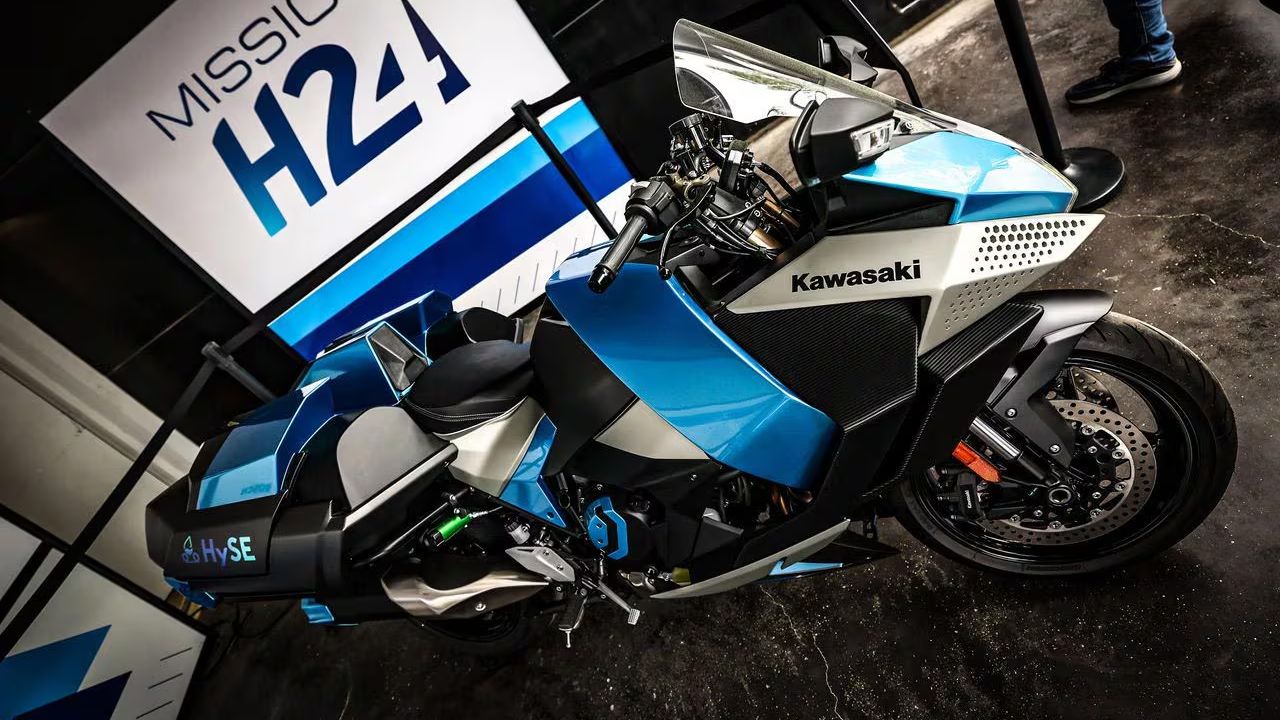As the automotive enterprise hurries up in the direction of greener options, Kawasaki has set its attractions on hydrogen-powered bikes to gain carbon neutrality via 2035. While hydrogen gasoline gives a promising direction to 0 emissions, Kawasaki’s journey is fraught with technical, infrastructural, and marketplace-associated challenges. This article explores the hurdles standing among Kawasaki and a hydrogen-powered destiny—and what they imply for the evolution of eco-friendly riding.
Why Hydrogen? Kawasaki’s Bold Vision for Sustainable Riding
Kawasaki’s hydrogen bike initiative aligns with worldwide decarbonization dreams. Unlike electric motorcycles (EVs), hydrogen vehicles promise faster refueling, longer degrees, and lighter weight—ideal for performance-oriented bikes. However, transitioning from traditional engines to hydrogen combustion or fuel mobile structures calls for overcoming great obstacles
Technical Challenges: Engineering a Hydrogen-Powered Engine
1. Hydrogen Storage and Density Issues
Hydrogen’s low energy density per volume complicates storage. Kawasaki must develop high-pressure tanks or cryogenic systems to store sufficient fuel without adding excessive weight—a critical factor for motorcycles.
2. Combustion Efficiency and Heat Management
Hydrogen burns hotter than gasoline, risking engine damage. Engineers are redesigning combustion chambers and cooling systems to handle extreme temperatures while maintaining performance.
3. Fuel Cell Complexity
If opting for fuel cells (which convert hydrogen to electricity), Kawasaki faces integration challenges. Fuel cells require additional components like compressors and humidifiers, which may compromise a bike’s compact design.
Bullet Points:
-
Current hydrogen tanks occupy 3x more space than gasoline equivalents.
-
Combustion engines may need 30% modifications to run on hydrogen.
Infrastructure Gaps: Building a Hydrogen Refueling Network
The Chicken-or-Egg Dilemma
Without widespread refueling stations, consumers won’t adopt hydrogen bikes—but energy companies hesitate to invest without demand. Japan and Europe lead in hydrogen infrastructure, but global coverage remains sparse.
Green Hydrogen Production Costs
Most hydrogen is produced using fossil fuels (“gray hydrogen”). Scaling affordable “green hydrogen” (made via renewable energy) is essential for true sustainability.
Bullet Points:
-
Only 500+ hydrogen stations exist worldwide (vs. millions of EV chargers).
-
Green hydrogen costs ~$3–$6/kg—twice as much as gray hydrogen.
Market Readiness: Will Riders Embrace Hydrogen?
Consumer Skepticism and Costs
Hydrogen bikes may debut at premium prices due to R&D expenses. Convincing riders to switch from gasoline or EVs requires educating them on long-term savings and environmental benefits.
Competition from Electric Motorcycles
EV giants like Zero Motorcycles dominate the eco-friendly market. Kawasaki must prove hydrogen’s advantages—like 3-minute refueling—outweigh EVs’ established convenience.
Regulatory Hurdles: Safety and Standardization
Hydrogen’s flammability demands rigorous safety protocols. Kawasaki must comply with evolving global standards (e.g., ISO 14687 for fuel quality) and lobby for supportive policies, such as subsidies for hydrogen vehicles.
The Road Ahead: Kawasaki’s Strategy to Overcome Barriers
Kawasaki isn’t tackling these challenges alone. Partnerships with energy firms like Shell and Iwatani aim to co-develop refueling solutions. Internally, the company is investing in hybrid models (hydrogen + electric) to ease the transition.
Conclusion: Balancing Innovation and Realism
While Kawasaki’s hydrogen motorcycle hurdles are large, they reflect the growing pains of any groundbreaking era. By addressing technical obstacles, infrastructure gaps, and purchaser perceptions head-on, Kawasaki should role hydrogen as a viable alternative to electric powered energy—ushering in a brand new generation of clean, high-overall performance motorcycling.
Also Read: 2025 Ducati XDiavel V4 First Ride: Redefining Power and Luxury
Hi, I’m Ehsaan Mukherjee – the mind behind slategray-tarsier-598917.hostingersite.com. I’ve always been fascinated by the power of technology and the thrill of automobiles. This platform is my personal space where I explore, write, and share everything that excites me in these two dynamic worlds.
Whether it’s breaking down the latest car models or diving into the world of innovative gadgets, I believe in keeping things simple, practical, and useful. slategray-tarsier-598917.hostingersite.com is more than just a website — it’s my way of connecting with curious minds like yours.
